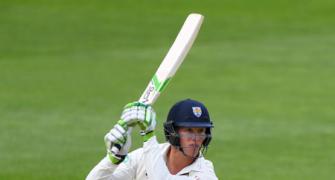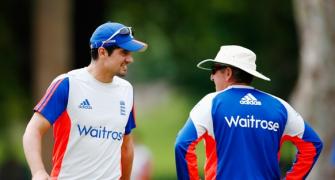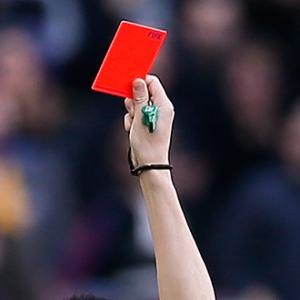'When we are talking about changing the size and dimensions of the bat, all we are talking about is the balance between bat and ball and bringing that back. We feel that in the last few years that it has actually gone a little bit too far in the favour of batsmen and it is more about mishits going for six'
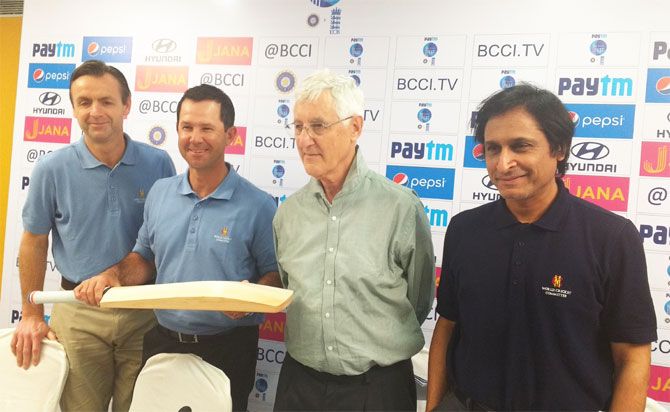
The modern day cricket has 'tilted too far in the batsman’s favour' according to the Marylebone Cricket Club's World Cricket Committee and its no surprise that they have come down hard on limiting the sizes and edges of cricket bats.
The MCC World Cricket Committee met in Mumbai on December 6 and 7 and one of the biggest and important talking points of their discussion was on how to limit the sizes of bat edges and depths.
In order to restore the balance between the bat and ball, the MCC World Cricket Committee headed by former England captain Mike Brearley and also comprising of former skippers Ricky Ponting and Sourav Ganguly has asked the main committee of MCC to approve a limit to bat edges of 40mm and bat depths of 67mm (60mm for the depth plus an allowance of 7mm for a possible curve on the face of the bat).
“When we are talking about changing the size and dimensions of the bat, all we are talking about is the balance between bat and ball and bringing that back. We feel that in the last few years that it has actually gone a little bit too far in the favour of batsmen and it is more about mishits going for six,” Ponting said in Mumbai on Wednesday.
The MCC believes that many of the top players’ bats have edges of between 38mm and 42mm, but there are some which have edges of up to 50mm, which was felt to be excessive and in need of restriction.
“What we are really conscious of is as well is that we don’t want to take the game back to the 1950s or 60s, we are just worried about where it was going to go. So the average player’s bat edge size is between 38 and 42 millimetres. There are exceptions to it, some guys are using bat with edges in excess of 50 millimetres and that is what we are worried. We are worried about the real extremes of that and the numbers that we have come about we are happy with that,” he stated.
Interestingly, a bat gauge will ensure that the new limits are adhered to in the professional game, whilst a moratorium period, allowing players to use their existing bats which may be in breach of the Law, will be allowed in the amateur game.
The length of the moratorium will be determined by local governing bodies and may vary for different levels of cricket.
Ponting says while the limit won’t impact big hitters like Mahendra Singh Dhoni and Kieron Pollard, who have the natural ability to hit big sixes, it would certainly hamper players, who have been using oversized bats.
“We are just trying to make the game fairer. The balance between bat and ball a little bit better. Bat manufacturers will tell you now even with edges of 40mm maximum and 60mm on the back that players won’t notice a huge difference. Some of the mishits won’t quite go as far but if you are good enough to hit the ball consistently somewhere near the middle of the bat, with the bats we have got you are going to clear the rope easily. Players like Dhoni, Pollard are naturally born strong big hitters, they have got nothing to worry about. It is going to guys that are not naturally that strong, that have got away with excessively sized bats if you like. Those players will notice the difference more than anybody else,” he said.
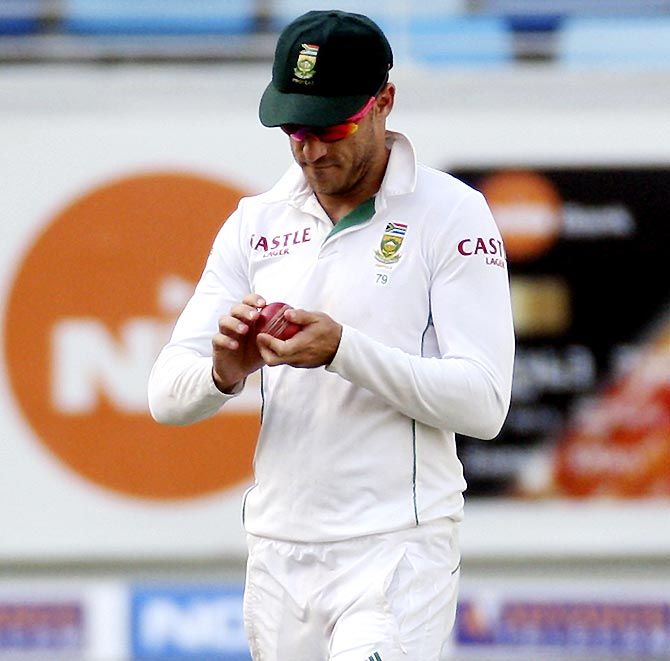
Among the other key discussions at the MCC meeting in Mumbai was the ball tampering issue which became a huge talking point after South Africa Faf du Plessis was charged with ball tampering during the Test match against Australia in Hobart last month.
“The committee was unanimous in stating that the laws are fine and we needn’t tinker with the law. It is pretty clear and straightforward,” Raja stated.
The concept of four day Test matches was also discussed at the MCC meeting but it failed to impress upon the members.
“Look, personally, I am very much in favour of five day Test match cricket and we only have to look back at the last 12-18 months and see how many great five Test matches there have been. But other guys in the committee would also like to see a trial of four-day Test cricket,” Ponting said.
Raja also echoed his views, saying a four day match would result in more draws.
“My biggest grief was that the lesser teams would get away with murder, they would be able to draw a game and in Test matches the best teams should win all the time, so that limited that possibility.”
The MCC World Cricket Committee also proposed changing the law on ball striking a fielder’s worn helmet. Catches and stumpings will be permitted after the ball has struck a fielder’s worn helmet. At present, catches and stumpings may be taken off a wicket-keeper’s pads, the use of which is optional, and so it seems unfair that they should not be permitted after hitting a helmet, the wearing of which is often compulsorily at many levels of the game.
It is felt that balls rebounding off a fielder’s helmet could equally help or hinder the fielding side and so the suggestion that rebounds off the helmet make catches easier should be disregarded.
The Brearley-led Committee believes that inclusion of cricket in the Olympic Games is the best way to spread the game worldwide.
"With the prospect of applying to become a participating sport for 2024 still on the table, the committee encourages the ICC to work as hard as possible to see the game introduced to the Olympics. The committee is encouraged to hear that a strategy is being written by ICC to look at the development of the game in both the US and China, but believes that the single most effective way cricket can grow around the world is by being included in the Olympics. The committee therefore asks all members of the ICC to work together to present its case for inclusion to the IOC," the MCC World Cricket Committee said in a media release.
The committee asked the International Cricket Council to instigate a World Test Championship.
"The committee encourages ICC to continue this work and, ultimately, to persuade its Members to introduce such a system. The last six months has seen some excellent, competitive Test cricket played around the world, but with the rankings system as they are, and with the lower-ranked nations starting from such a long way behind, getting to the top seems almost unattainable. A conference system, with all teams starting from scratch, gives the lower-ranked teams more hope of toppling the best nations, and will help to stimulate interest and proper context in what is the ultimate form of the game," it said.

